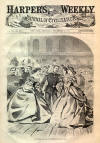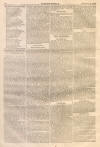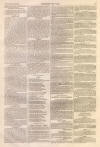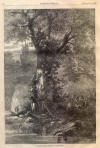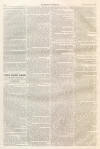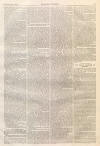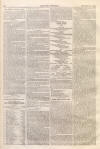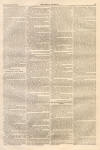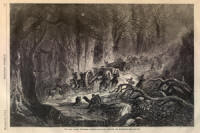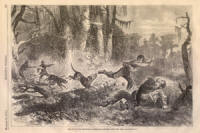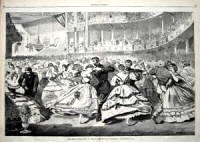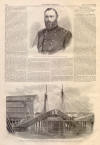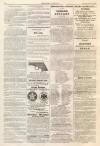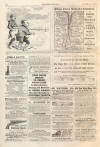Dr. William Hammond - Surgeon General
|
|
This Site:
|
HARPER'S WEEKLY. [NOVEMBER 21, 1863. 748 DR. WILLIAM A. HAMMOND, SURGEON-GENERAL UNITED STATES ARMY.(Previous Page) 'Aleck Hayes,' rides up, and, pointing to the last fence the enemy must cross before reaching us, says, 'Don't fire till they get to that fence; then let 'em have.' "On, on, come the rebs, till we can see the whites of their eyes, and hear their officers command, 'Steady, boys, steady!' They reach the fence, some hundred yards in front of us, when suddenly the command 'Fire!' rings down our line; and, rising as one man, the rifles of the old Second Army Corps ring a death-knell for many a brave heart, in butternut dress, worthy of a better cause—a knell that will ring in the hearts of many mothers, sisters, and wives, on many a plantation in the once fair and sunny South, where there will be weeping and wailing for the soldier who never returns, who sleeps at Gettysburg. 'Load and fire at will!' Oh Heaven! how we poured our fire into them then—a merciless hail of lead! Their first line wavers, breaks, and runs; some of their color sergeants halt and plant their standards firmly in the ground: they are too well disciplined to leave their colors yet. But they stop only for a moment; then fall back, colors and all. They fall back, but rally, and dress on the other lines, under a tremendous fire from our advancing rifles: rally, and come on again to meet their death. Line after line of rebels come up, deliver their fire, one volley, and they are mown down like the grass of the field. They fall back, form, and come up again, with their battle-flags still waving; but again they are driven back. "On our right is a break in the line, where a battery has been in position, but, falling short of ammunition, and unable to move it off under such a heavy fire, the gunners have abandoned it to its fate. Some of the rebels gain a footing here. One daring fellow leaps upon the gun, and waves his rebel flag. In an instant a right oblique fire from 'ours,' and a left oblique from the regiment on the left of the position, rolls the ragged rebel and rebel rag in the dust, rolls the determined force back from the gun, and it is ours. "By-and-by the enemy's lines come up smaller and thinner, break quicker, and are longer in forming. Our boys are wild with excitement, and grow reckless. Lieutenant John Tibbetts stands up yelling like mad, 'Give it to 'em! give it to 'em!' A bullet enters his arm—that same arm in which he caught two bullets at Antietam: Johnny's game arm drops by his side; he turns quickly to his First Lieutenant, saying, 'I have got another bullet in the same old arm, but I don't care a d—n!' Heaven forgive Johnny! rebel lead will sometimes bring rebel words with it. All of 'OURS' are carried away with excitement; the Sergeant-Major leaps a wall, dashes down among the rebs, and brings back a battle-flag; others follow our Sergeant-Major; and before the enemy's repulse becomes a rout we of the Fourteenth have six of their battle-flags. "Prisoners are brought in by hundreds, officers and men. We pay no attention to them, being too busy sending our leaden messengers after the now flying hosts. One of our prisoners, a rebel officer, turns to me, saying, 'Where are the men we've been fighting?' 'Here,' I answer, pointing down our short thin line. 'Good God!' says he, 'is that all? I wish I could get back.' " "Yes," I interrupted, "Townsend told me that when he fell back with his skirmishers and saw the whole length of our one small, thin, little line pitted against those then full lines of the rebels, his heart almost sank within him; but Meade had planned that battle well, and every one of our soldiers told." "Yes," said Fred, "Meade planned the fight well, and Hancock, Hayes, and in fact all of them fought it well. All through the fight General Hancock might be seen galloping up and down the lines of our bully corps, regardless of the leaden hail all about him; and when finally severely wounded in the hip he was carried a little to the rear, where he lay on his stretcher and still gave his orders. "The fight was now about over; there was only an occasional shot exchanged between the retreating rebel sharp-shooters and our own men, and I looked about me and took an account of stock. We had lost about seventy killed and wounded and taken prisoner, leaving only a hundred men fit for duty. We had killed treble that number, and taken nearly a brigade of prisoners; six stands of colors, and guns, swords, and pistols without number. For the first time we had been through an action without having an officer killed or fatally wounded, though Tibbetts, Seymour, Stoughton, Snagg, Seward, and Dudley were more or less seriously wounded, and Coit disabled. "Hardly a man in the regiment had over two or three cartridges left. Dead and wounded rebels were piled up in heaps in front of us, especially in front of Companies A and B, where Sharpe's rifles had done effective work. "It was a great victory. 'Fredericksburg on the other leg,' as the boys said. The rebel prisoners told us their leaders assured them that they would only meet the Pennsylvania militia; but when they saw that d—d ace of clubs (the trefoil badge of the Second Corps), a cry went through their lines—'the Army of the Potomac, by Heaven!' "So ended the battle of Gettysburg, and the sun sank to rest that night on a battle-field that had proved that the Army of the Potomac could and would save the people of the North from invasion whenever and wherever they may be assailed. "'Long shall the tale be told, Yea, when our babes are old.'" "Pshaw, Fred! you are getting sentimental. Let's go out in the air and have another cigar." DR WILLIAM A. HAMMOND,SURGEON-GENERAL UNITED STATES ARMY.DR. WILLIAM A. HAMMOND, the present Surgeon-General of the United States Army, whose portrait we give herewith, was born at Annapolis, Maryland, in 1828, and with his parents removed to Harrisburg, Pennsylvania, in 1832. At the age of sixteen he commenced the study of medicine with Dr. E. N. Roberts, of Harrisburg, and afterward attended lectures and graduated at the University of New York, in 1848. He then went to Philadelphia, and was engaged at the Pennsylvania Hospital until June 29, 1849, when he entered into the army. Ordered immediately upon duty to Santa Fe, New Mexico, he staid there three years, seeing much hard service and consequent exposure in the Indian wars, which brought on a functional disorder of the heart, and obliged him to retire from active service for a brief period. Upon his restoration to health he was sent to Florida for six months, then to West Point, from thence to Kansas and Fort Riley, where he remained for four years. As Medical Director he was on the Sioux Expedition, and in the same capacity on Exploring Expedition to the Rocky Mountains. Returning East with a somewhat disordered constitution, he nevertheless applied himself to severe study, but was eventually forced to take a trip to Europe for the recovery of his health. While in Europe he studied the army medical systems, visited laboratories, hospitals, museums, military camps and posts, thus unconsciously preparing himself for his present position, and upon his return with recovered health, after a year spent at Mackinaw in the service, he was appointed Professor of Anatomy and Physiology in the University of Maryland, at Baltimore, and also officiated as Surgeon at Baltimore Infirmary, and Lecturer on Clinical Surgery. Resigning his commission in the army, he remained in the University for about six months, when the rebellion having broken out he promptly offered his services to the Government, and accepted a subordinate position far below that to which his eminent abilities justly entitled him. Again in active service with General Patterson at Hagerstown, he was placed in charge of the General Hospital, afterward at Fredericksburg, and Baltimore with General Banks: at the latter place he organized an admirable hospital, and from thence he was sent to Wheeling, Virginia, as Medical Purveyor, and Inspector of Hospitals for Generals Rosecrans and Fremont. While here he made a capital report, and submitted plans for field hospitals which brought him prominently before the Government, and upon the dismissal of Surgeon-General Finley, he was selected to fill that important post upon the 25th of April, 1862, although the eightieth on the list of medical officers. Dr. Hammond's contributions to Medical literature have been extensive and varied, and have procured for him a high stand among his professional brethren. Too numerous to notice in the brief space allotted us, many of them were the results of actual experiment upon himself. TERRIBLE ACCIDENT AT THE RUSH STREET BRIDGE, CHICAGO.—FROM A PHOTOGRAPH BY ALSCHULER.—[SEE PAGE 743.]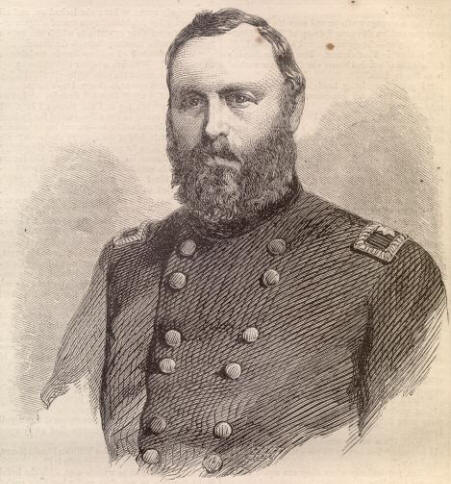 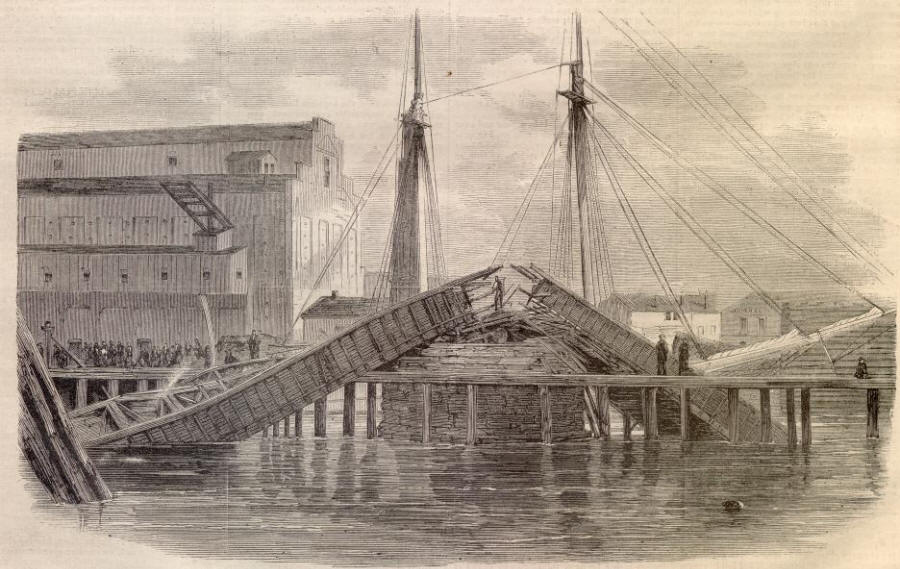 |
||||||||||||||||||||||||||||||
|
|
||
|
|
Site Copyright 2003-2018 Son of the South. For Questions or comments about this collection, contact paul@sonofthesouth.net |
|
|
Are you Scared and Confused? Read My Snake Story, a story of hope and encouragement, to help you face your fears. |
||
